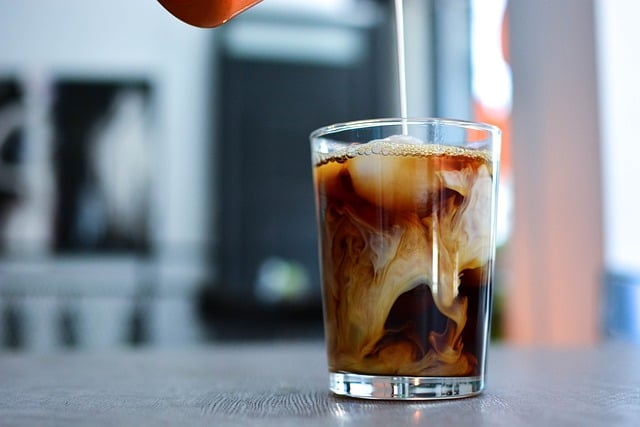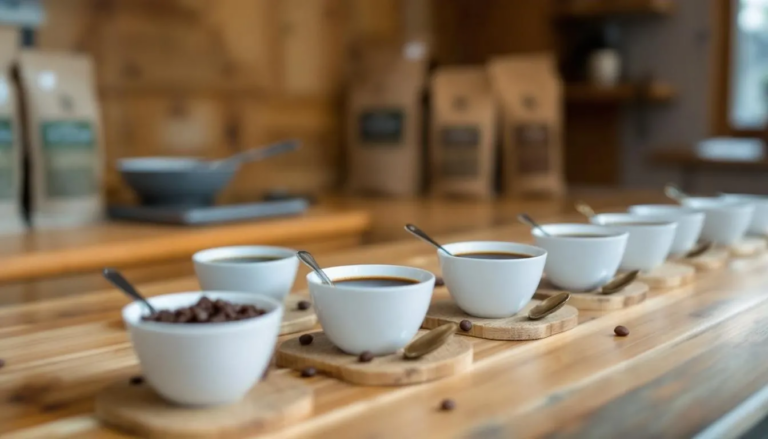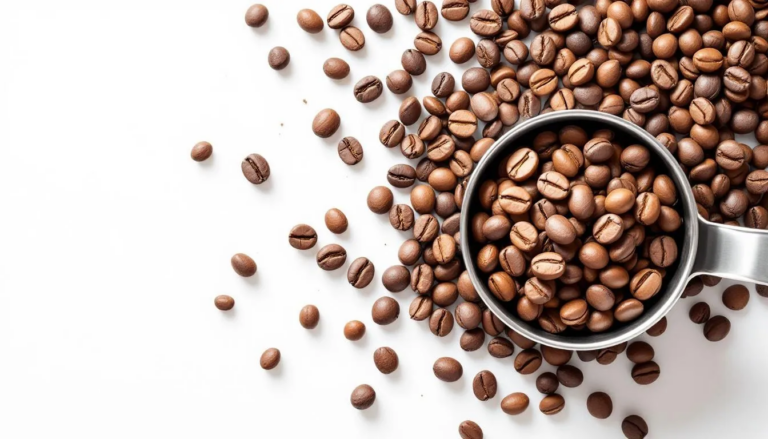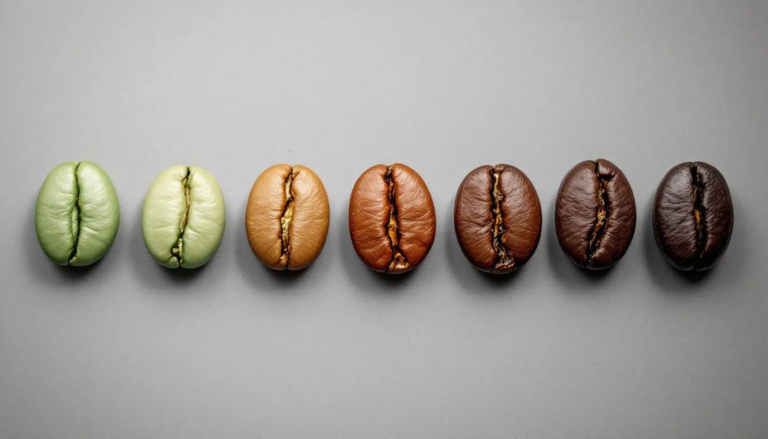Looking for the best cold brew roast to elevate your iced coffee game? You’ve come to the right place. This article will explore the top roasts that are perfect for cold brewing, highlighting what makes each one unique and how they contribute to a smooth and flavorful drink.
Key Takeaways
- Cold brew coffee is made by steeping coffee grounds in cold or room temperature water for 12-24 hours, resulting in a smoother, sweeter, and less acidic drink.
- Choosing the right roast is crucial for cold brew; dark roasts provide bold flavors and low acidity, while medium and light roasts offer a balanced and unique experience.
- For an optimal cold brew, use coarsely ground coffee and the recommended coffee-to-water ratios, and store in an airtight glass container to maintain freshness.
What is Cold Brew Coffee?
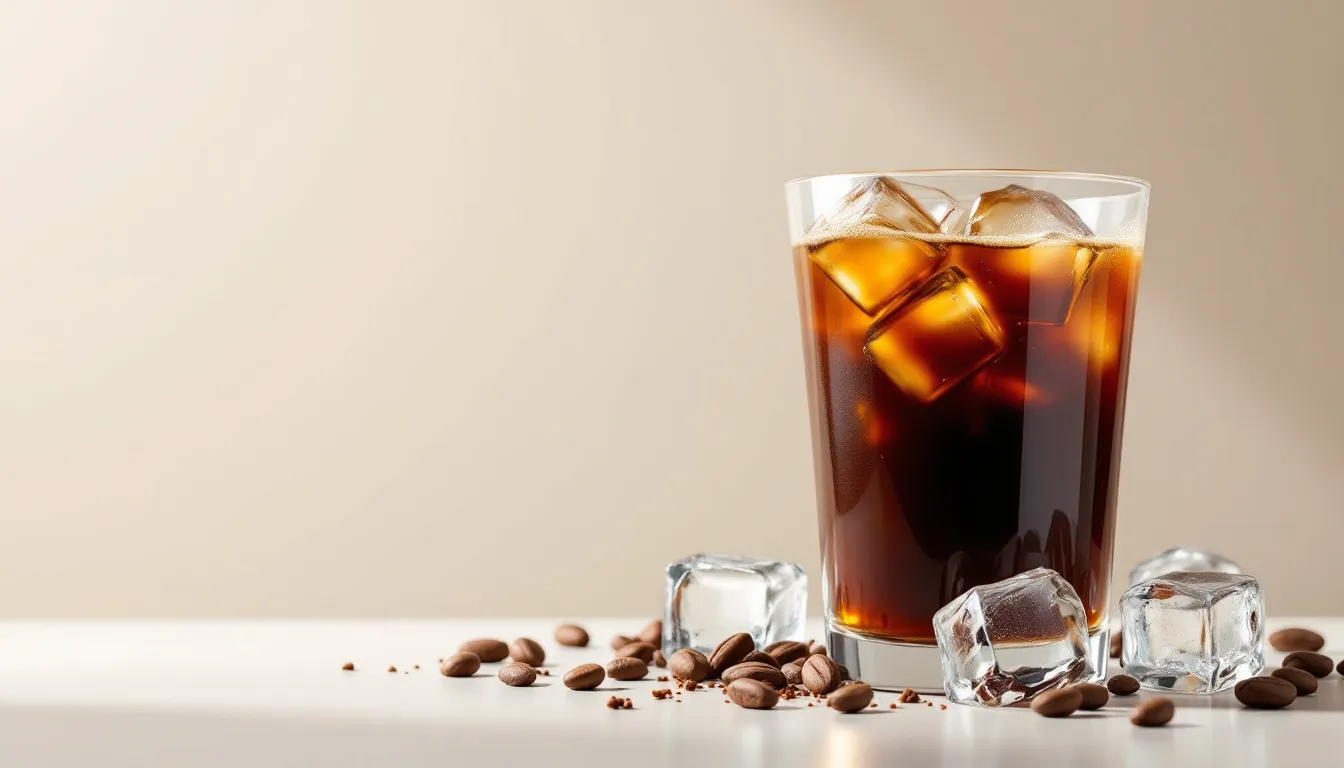
Cold brew coffee is a game-changer in the world of caffeinated drinks. Unlike traditional hot brewed coffee, which is made by brewing coffee grounds with hot water, cold brewing coffee involves steeping coffee grounds in cold or room temperature water for 12-24 hours. This unique brewing process results in a smoother, sweeter drink with significantly less acidity, making it a favorite for those who find hot coffee too harsh on their stomachs. Cold brew coffees are becoming increasingly popular for their refreshing taste.
The flavor profile of cold brew coffee is distinctively different from its hot brewed counterpart. It’s often sweeter and less bitter, allowing the natural flavors of the coffee beans to shine through. Cold brew can also be made as a concentrate, which can be diluted with water or milk to achieve the desired strength. This versatility and unique taste have made cold brew a popular choice for coffee lovers everywhere.
The Importance of Choosing the Right Roast
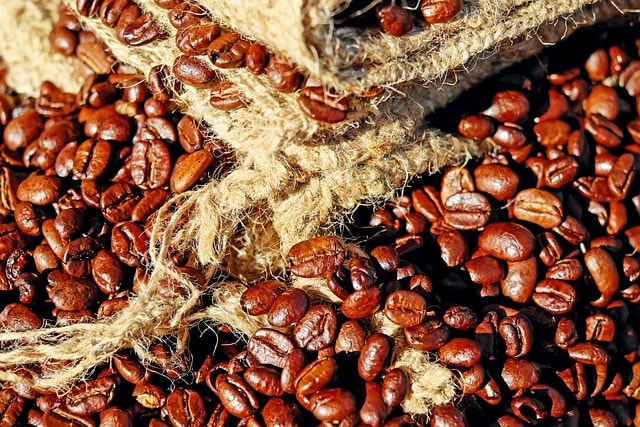
Selecting the right roast is paramount for crafting the perfect cold brew coffee. The roast level of your coffee beans significantly impacts the flavor profile and overall experience of your cold brew. Dark roasts, known for their rich and complex flavors, are a favorite among cold brew enthusiasts. The cold brewing process enhances the natural sweetness of the beans while reducing acidity, making dark roasts an excellent option for a smooth and robust drink.
On the other hand, medium roasts strike a balance between the sweet, chocolatey notes of darker roasts and the bright acidity of lighter ones. Lighter roasts, while less common in cold brewing, can still offer a unique and delicate flavor profile, though they may not always stand up to the extended steeping time as well as darker roasts.
Grasping these nuances aids in selecting the best beans for a consistently delightful cold brew experience.
Dark Roasts: Bold and Robust
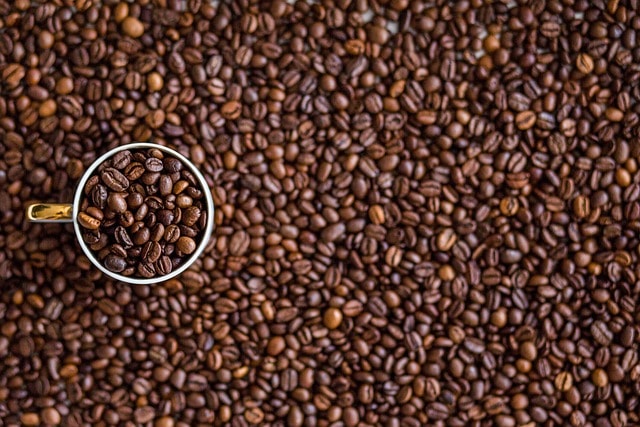
For those who crave a bold and robust flavor in their cold brew coffee, dark roasts are the way to go. These beans are roasted at high temperatures, reaching up to 464°F, which results in a smoky and rich flavor profile that is both satisfying and complex. Dark roast coffee typically has less acidity and caffeine compared to lighter roasts, contributing to a smoother drinking experience that many cold brew lovers appreciate.
The consistent flavor of dark roast coffee beans, combined with their lower acidity, makes them ideal for cold brew. This roast level emphasizes earthy and chocolatey notes, resulting in a deeply satisfying cup. For those new to cold brewing or experimenting with flavors, dark roasts offer a safe and delicious starting point.
Medium Roasts: Balanced and Flavorful
Medium roasts provide a balanced flavor profile, making them ideal for cold brew coffee. These beans reveal more of the bean’s natural flavors compared to dark roasts, with a flavor complexity that includes notes of fruits, nuts, and grains. This balanced acidity and sweetness create a smooth and enjoyable coffee experience, perfect for those who appreciate a nuanced and refined taste in their cold brew.
Brewed as cold brew, medium roasts result in a smooth and sweet coffee that is both refreshing and satisfying. The balanced flavor profile ensures that the coffee is neither too acidic nor too bitter, making it an excellent choice for those who want to enjoy the best of both worlds. Check out Coopers Cask Coffee for their offerings on medium roasts, like their Rwanda, or Guatemalan single origins!
Light Roasts: Bright and Fruity
Light roast coffee beans, roasted until the first crack, exhibit a light brown color and lack surface oil. The shorter roasting duration preserves the bean’s natural flavors, yielding a bright and fruity profile perfect for cold brew. The high acidity and delicate flavors of light roasts can offer a unique and vibrant cold brew experience, though they require careful preparation to avoid over-extraction.
While light roasts are not as common in cold brewing, they can still produce a delightful and nuanced cold brew coffee. The bright acidity and natural flavors of the beans shine through, providing a refreshing and invigorating drink. For those adventurous in flavor exploration, light roast coffee adds an exciting dimension to your cold brew repertoire.
Single Origin vs. Blends for Cold Brew
When it comes to cold brew coffee, the choice between single origin and blended coffees can significantly impact your flavor experience. Single origin coffee, sourced from a specific region, offers true regional flavors and better farmer traceability. This can result in a unique and authentic flavor profile that highlights the characteristics of the region’s coffee beans.
Conversely, blended coffees provide a consistent flavor profile, favored for their balanced taste and versatility across brewing methods. By mixing beans from different regions, blends can achieve a complex and harmonious flavor profile that is both satisfying and reliable.
Experimenting with both single origin and blended coffees can help you discover the best flavor for your cold brew preferences.
Coarse Ground Coffee: The Key to Perfect Extraction
One of the most critical factors in making the perfect cold brew coffee is the grind size. Coarsely ground coffee beans are key for optimal extraction, preventing bitterness. A coarse grind allows for a slow and even extraction of flavors during the cold brewing process, resulting in a smooth and balanced cup of coffee. In contrast, using a fine grind can lead to over-extraction and a bitter taste.
Consistency is key when it comes to grind size. Inconsistent grind sizes can lead to uneven extraction, resulting in varying flavor profiles in your cold brew. For the best results, aim for a coarse grind similar to raw sugar or kosher salt, which enhances the coffee’s natural sweetness without introducing bitterness.
A consistent and appropriate grind size ensures the perfect cold brew coffee every time.
Recommended Coffee-to-Water Ratios
The coffee-to-water ratio determines the strength and flavor of your cold brew. For a stronger flavor, a ratio of 1:4.5 is recommended, while a more diluted brew can be achieved with a ratio of 1:11. A typical cold brew recipe suggests using a ratio of 1 ounce of coffee to 1 cup of water, which strikes a balance between strength and smoothness.
To produce one liter of cold brew, approximately 125 grams of coffee is needed at a 1:8 ratio. Adjusting the ratio customizes the strength and flavor to your liking. Trying different ratios can help you find the ideal balance for your cold brew.
Tips for Brewing the Best Cold Brew Coffee
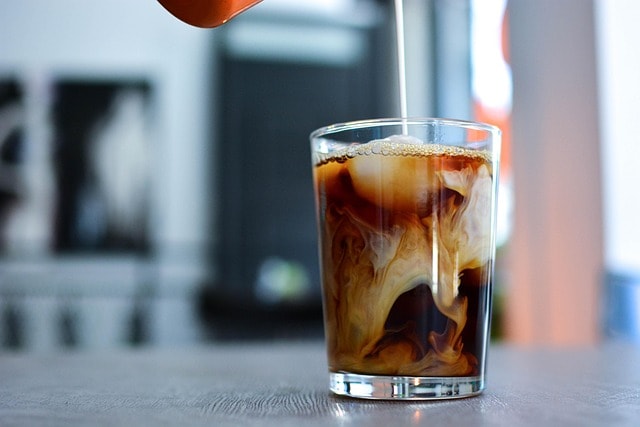
Crafting the perfect cold brew requires attention to detail and some simple tips. Start by wetting the coffee grounds completely with water to ensure even extraction. Cold brew coffee typically requires steeping for 16-18 hours, but if you’re brewing at room temperature, you can let it sit for 20-24 hours. Using a coarse grind allows for a slow and even extraction of flavors, resulting in a smooth and balanced cup of coffee.
Consistency in grind size is particularly crucial for cold brew coffee. Inconsistent grind sizes can lead to uneven extraction, which can affect the flavor of your brew. For easy and mess-free preparation, consider using a cold brew kit, which simplifies the brewing process and helps you achieve consistent results every time.
A recommended coffee-to-water ratio for making cold brew coffee is 1:5, but you can adjust this based on your taste preferences. Finally, remember that larger batches of cold brew can be made using a 1:6 ratio, which is perfect for those who want to have plenty of cold brew on hand.
Following these tips ensures a delicious and refreshing cold brew, tailored to your taste.
Storing Your Cold Brew Coffee
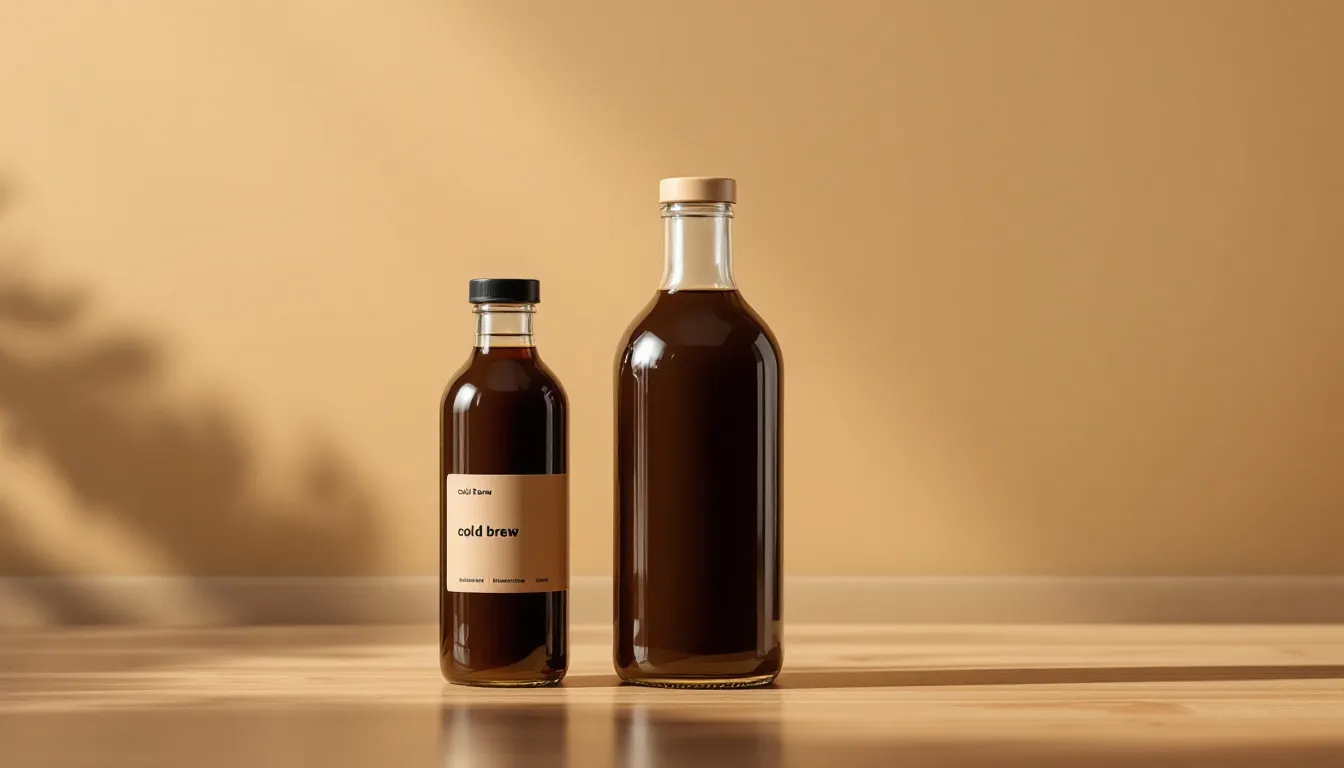
Proper storage maintains the freshness and flavor of your cold brew. Using an airtight glass container is the best way to preserve the quality of your cold brew. Glass jars are preferable since they do not absorb flavors like plastic or metal containers, ensuring that your cold brew retains its pure taste.
It’s recommended to prepare cold brew in batches sufficient for a week to ensure optimal freshness. Cold brew coffee generally remains fresh for about 7 to 10 days when stored in the fridge. Adhering to these storage tips ensures fresh and delicious cold brew every time.
Enhancing Your Cold Brew Experience
Enhancing your cold brew coffee is all about experimenting with flavors and serving styles. Adding whole spices such as cinnamon sticks, vanilla beans, or anise during the brewing process can infuse your cold brew with delightful and aromatic flavors. For those who enjoy a sweeter drink, syrups and sugars can be added at the end of the brewing process to enhance the flavor.
Dissolve flavored sugars in warm water before mixing them into your cold brew for best results. Serving your cold brew coffee over lots of ice and diluting it with a splash of milk or water can create a refreshing and satisfying drink.
Experimenting with these enhancements can elevate your cold brew experience, offering a personalized and flavorful coffee each time.
Summary
Choosing the right roast is essential for making the perfect cold brew coffee. Dark, medium, and light roasts each offer unique flavor profiles that can enhance your cold brew experience. Understanding the importance of grind size and coffee-to-water ratios will help you achieve the best results. Proper storage and flavor enhancements can further elevate your cold brew, making it a delightful and refreshing drink.
Experimenting with different roasts, grind sizes, and flavor additions can help you discover your favorite cold brew recipe. Whether you’re a seasoned cold brew enthusiast or new to the world of cold brewing, these tips and guidelines will help you create a delicious and satisfying cold brew coffee that you can enjoy every day.
Frequently Asked Questions
What is the best roast for cold brew coffee?
For cold brew coffee, dark roasts are a favorite because of their rich flavor, but don’t overlook medium and light roasts for a unique taste experience. Experimenting with different roasts can lead to delightful surprises!
How long should I steep my cold brew coffee?
For the best flavor, steep your cold brew coffee for 16-18 hours, or up to 24 hours if you’re doing it at room temperature. Trust me, it’s worth the wait!
What is the ideal coffee-to-water ratio for cold brew?
The ideal coffee-to-water ratio for cold brew is about 1 ounce of coffee to 1 cup of water, but feel free to tweak it based on your taste!
How should I store my cold brew coffee?
To keep your cold brew fresh for 7-10 days, store it in an airtight glass container in the fridge. This way, you’ll enjoy its deliciousness for over a week!
Can I enhance my cold brew coffee with flavors?
Absolutely! Adding whole spices, flavored syrups, or sweeteners can really elevate your cold brew coffee. Give it a try and see what flavors you enjoy!
